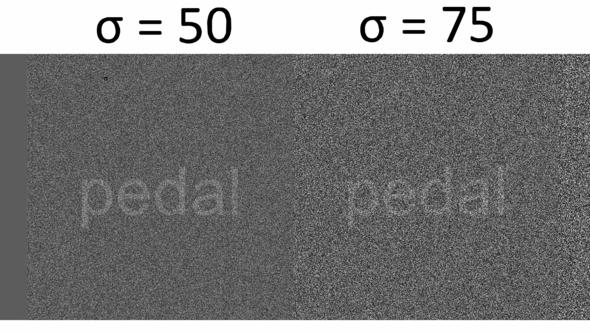Previous studies have shown that children with attention difficulties and/or ADHD solve cognitive tasks better when they are exposed to auditory white noise. However, this is the first time that such a link has been demonstrated between both visual and auditory white noise and cognitive abilities such as memory, reading, and non-word decoding in children with reading and writing difficulties.
Related article: New Roger Focus Helps Children Pay Attention

“The white noise to which we exposed the children, also called visual pixel noise, can be compared with giving children glasses. The effect on reading and memory was immediate,” said Göran Söderlund, senior lecturer in education at the University of Gothenburg and Professor of Special Education at the Western Norway University of Applied Sciences.
An article describing the research appears on the University of Gothenburg’s website.
11-year-olds tested
The study was conducted on around 80 students in their first year at secondary school in the Småland region of southern Sweden. The children who took part were selected following a word recognition test and were split into three groups: good readers, children with some reading difficulties, and children with major reading difficulties (ie, having phonological impairments).
In the study, the children were asked to read 12 words while being exposed to four different levels of visual white noise, from zero to high. The test involved assessing how many of the words the children could read correctly and how many words they were able to recall afterwards.
White noise improves reading skills and memory
The results showed that the group with major reading difficulties, particularly phonological difficulties, performed significantly better when exposed to visual pixel noise. They read more words correctly and also recalled more words in the moderate noise conditions. The white noise had no effect or negative effects on the good readers and those with only minor reading problems.
“This is the first evidence of visual white noise having effects on higher-level cognition, in this case both reading and memory,” said Söderlund.
Right amount of white noise key
The children were exposed to different levels of white noise, with the results showing that the amount of noise is critical for reading and memory.
“You can compare it with being shortsighted and needing glasses. We saw that when we exposed the children to a medium level of white noise, their reading improved. However, their reading skills were less good when there was no noise or a high level of noise,” said Göran. “These results show that children with reading and writing difficulties can be helped with an incredibly simple intervention. By adjusting screens in school or at home, we hope to be able to resolve their problems at a stroke. This is the first study of its kind, and replications are needed.”
Further research required
Söderlund now wants to further investigate the effects of white noise. He hopes that new studies can answer the question of whether practicing with white noise for a prolonged period can lead to lasting improvements.
“It’s worth exploring, as we just don’t know,” he said. “This first study of ours is basic research. But our results show that the children improved immediately, so it’s important to continue with new studies to establish whether this simple measure, which everyone can do on their own laptop, will actually provide enduring help for these children.”

Original Paper: Söderlund GBW, Johnels JA, Rothén B, Torstensson-Hultberg E, Magnusson A, Fälth L. Sensory white noise improves reading skills and memory recall in children with reading disability. Brain and Behavior. 2021;00:e02114.
Source: University of Gothenburg, Brain and Behavior
Images: University of Gothenburg, Agneta Lundberg





